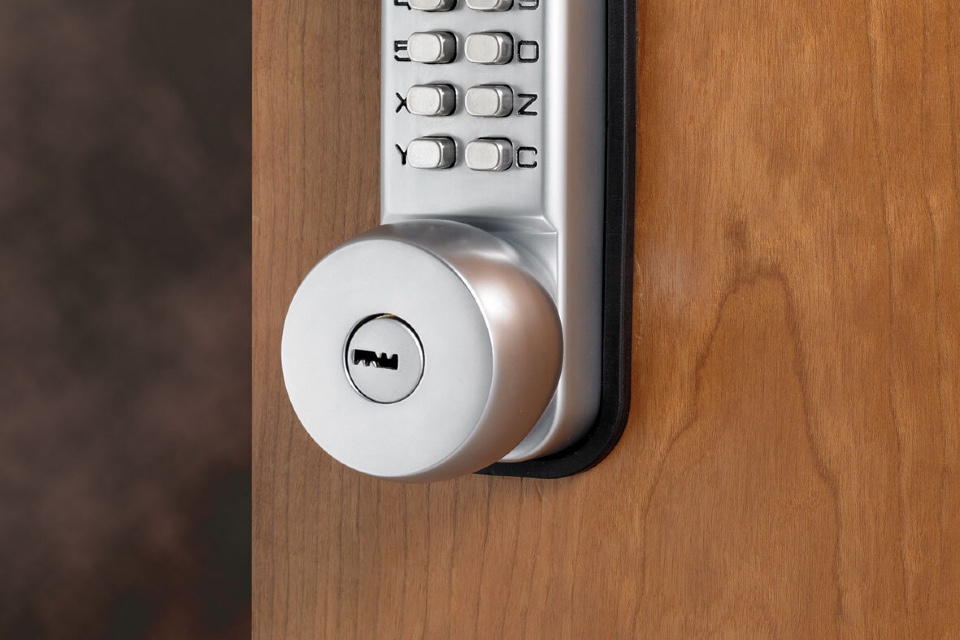In 2022, implementing and managing security solutions for buildings of any scale can be a complex process. To elaborate on one of the most effective measures for building in security, Tommy Geddes, Commercial Director for George Boyd speaks about the importance of layered physical security in the modern world…
Building for security has always been a vital part of the construction process. Ensuring an effective security system across your construction project makes the job of every security personnel and facilities manager worlds easier. This is crucially important as the modern facilities manager has a huge number of responsibilities across their site, whether that incorporates just a single building or multiple different locations across a wider premises.
From straightforward maintenance and upkeep, right through to vital health and safety activities such as implementing fire evacuation protocols and procedures, the role of the facility manager is ever expanding to fit the multiple needs of occupants and commercial tenants. From a security perspective, every site manager needs to be aware of the live state of each specific access point to a site, keep a watchful eye on any areas vulnerable to intrusion as well as tracking residents or occupants as they enter or leave the building or site both for security reasons and health and safety purposes.
With so many roles to play and such a large amount of responsibility on their shoulders, developing a security mix that reduces the demands on both time and attention should be a top priority. It’s in this area that the concept of a multi-layered approach to physical security can make a massive difference, with its unique approach giving facilities managers the support they need to effectively manage security across a site of any size and ensuring contractors are providing the best possible security setup for their projects.
The theory of multi-layered security is built from centuries of expertise in defence and security, stretching all the way back to the mediaeval period and the huge castles and hill forts that dominated the landscape. These massive installations utilised an effective multi-layered approach that included moats, trenches, barricades and large walls to deter intrusion.
Today, a multi-layered approach is tackled rather differently. Facilities managers can take advantage of a networked approach, building both physical security measures and digital security apparatus into a tightly controlled mesh of protection measures that can cover an entire site.
It is the combination of measures in an efficient and effective manner that creates a strong security system. For example, careful security camera placement, twinned with physical measures like heavy-duty gates and guard posts or desks enables the facilities manager to identify any potential risk factors and eliminate threats before they escalate.
Technology can also play a critical role in your overall security network. Far from the traditional lock and key, the latest digital access control systems often allow you to view the current status of an entryway from a central database, enabling you to see whether a door or window is open or closed and locked or unlocked from your computer. An increasing number of digital access controls also include an auditable access trail, allowing for security staff to track entries through specific employee or resident codes.
Developing this approach should be driven from a contractor level. Every project of significant scale that is likely to have a number of security challenges should be developed with overall site security in mind, with elements such as landscaping and layout considered as part of the overall security mix. Avoiding landscape design that offers potential intruders easy blindspots and limiting the number of access points to monitor are just two of the many ways security can be developed into design.
To develop a comprehensive network, consider where you’re likely to need the most security in your site map. If areas are off-limits, or contain sensitive or restricted items, consider implementing digital access control that can provide audit trails in case of a loss or theft. Parts of a building or site that are outside of a patrol route or are otherwise hard to access should be covered with rotational cameras that reduce the need to staff parts of a building or site by offering full visibility of an area.
The earlier that you can consider security in your projects, the better. Starting off from a perspective of preventing intrusion means that contractors will deliver a strong security mix that is easily manageable for the facilities managers, creating a holistic system that keeps everyone happy and provides peace of mind across the board.








